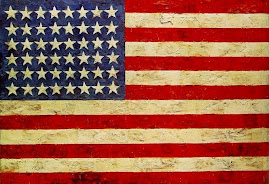
Tuesday, February 26, 2008
US Imperialism: Comparing turn of the 20th and 21st century international relations

Monday, February 18, 2008
Election Study: Comparing turn of the 20th century politics with today's presidential race

http://www.huffingtonpost.com/jon-wiener/nyts-krugman-hillary-_b_70643.html
http://www.usnews.com/articles/news/politics/2008/01/17/phony-letter-helped-unseat-a-president.html
a) Research two third party candidates and summarize and compare their views with the other candidates you read about for this blog
Thursday, February 7, 2008
Nativism and Immigration in the Gilded Age

Read the article posted below (two formats available):
http://www.vanells.com/125-22.pdf (with images, PDF requires Adobe Acrobat)
http://64.233.169.104/search?q=cache:vJ8_Q9ffkMgJ:www.vanells.com/125-22.pdf+gilded+age+and+immigration,+disease&hl=en&ct=clnk&cd=8&gl=us
(HTML/ will work on any computer)
AND Chapter One of Jacub Riis' How the Other Half Lives
http://en.wikisource.org/wiki/How_the_Other_Half_Lives/Chapter_I
A) Discuss how health, sanitation and scientific theory affected the lives of "old immigrants" in the Gilded Age.
B) Consider Riis' arguments for social reform and Herbert Spencer's theory of Social Darwinism.
In your opinion, was the government responsible for the health and safety of immigrant communities at the turn of the 20th Century?
Should undocumented (alien) immigrants recieve social services in modern US society?
How do your opinions on these matter relate to the Riis and Spencer?
C) Respond to the post of at least one classmate.
Tuesday, February 5, 2008
Digital History Investigation: The Gilded Age
Group work project - 50 points
Over the next two class periods, we shall be exploring the Gilded Age through the following social and political lenses:
· African Americans After Slavery
· Indian Policy
· Changing Status of Women
· Farmers' Revolt
· Responses to Industrialization
Directions:
1. Chose one of the topics above and move to the table marked with that label. This will be your working group for our first project of the new marking period.
2. You group must complete the following tasks on our class blog OR powerpoint:
Using resources at the Digital History archive: http://www.digitalhistory.uh.edu/modules/gilded_age/index.cfm
A) Create a mini-timeline identifying 8 events related to your topic. Summarize three of the most important of these events in detail. Use the timeline link on the homepage for this assignment to aid you in this process.
B) Identify and summarize a landmark Supreme Court case that related to your topic of study. How did the outcome/ decision influence society in the Gilded Age?
C) Answer any two of the questions at the end of your topic summary. Overall, do you feel the trends and developments related to your topic in the Gilded Age advanced or hindered social progress in the United States?
D) Post and summarize at least two visual sources (cartoons, maps, graphs, photographs, etc.) related to your topic. This task requires internet research outside of the URL provided, so be sure to post links to your visual sources and (if possible) include MLA citations.
E) Compose three study questions that your classmates should be able to answer upon reading your group’s work.
3. Present your work to the rest of our class (Thursday)
Note: we will only have access to the computers in class today (Tues 2/5) and tomorrow (Wed. 2/6) so it is vital that you take responsibilty for some of this work at home.
Your homework tonight is to work on this assignment.
9-10 points: accurate analytical work that reflects a comprehensive understanding of the period and topic area assigned. Insightful connections drawn to economic, social and cultural trends and/or other periods of US history.
7-8 points: Accurate work that reflects a thorough understanding of the era and topic assigned. Work is straightforward and provides historical detail with some analysis.
5-6 points: Work includes factual errors but attempts to meet guidelines of the task.
3-4 points: Work is incomplete
0 points: section missing
Saturday, February 2, 2008
Term 2 Blog Assignment #1: US Society in the Gilded Age

"In the year 1877, the signals were given for the rest of the century: the blacks would be put back; the strikes of white workers would not be tolerated; the industrial and political elites of North and South would take hold of the country and organize the greatest march of economic growth in human history. They would do it with the aid of, and at the expense of, black labor, white labor, Chinese labor, European immigrant labor, female labor, rewarding them differently by race, sex, national origin, and social class, in such a way as to create separate levels of oppression-a skillful terracing to stabilize the pyramid of wealth... the government of the United States was behaving almost exactly as Karl Marx described a capitalist state: pretending neutrality to maintain order, but serving the interests of the rich... the purpose of the state was to settle upper-class disputes peacefully, control lower-class rebellion, and adopt policies that would further the long-range stability of the system."
Consider the varying social and economic strains experienced by the United States at the turn of the Ninteenth century as described in Zinn's artilce: http://www.historyisaweapon.com/defcon1/zinnbaron11.html
Summarize the key developments revealed in the text and respond to the following questions:
- Did the US government's actions in this era benefit the nation as a whole or (as Zinn seems to believe) did the economic policies that emerged in the Gilded Age benefit the wealthy and punish the poor/working classes?
- To what extent should the government regulate private industry?
Your response should be at least 200 words and relate to at least one other post
Anyone seeking extra credit may complete the blog my US classes are working on, which is related to this topic.
http://www.msfrancisushistoryablock.blogspot.com/
